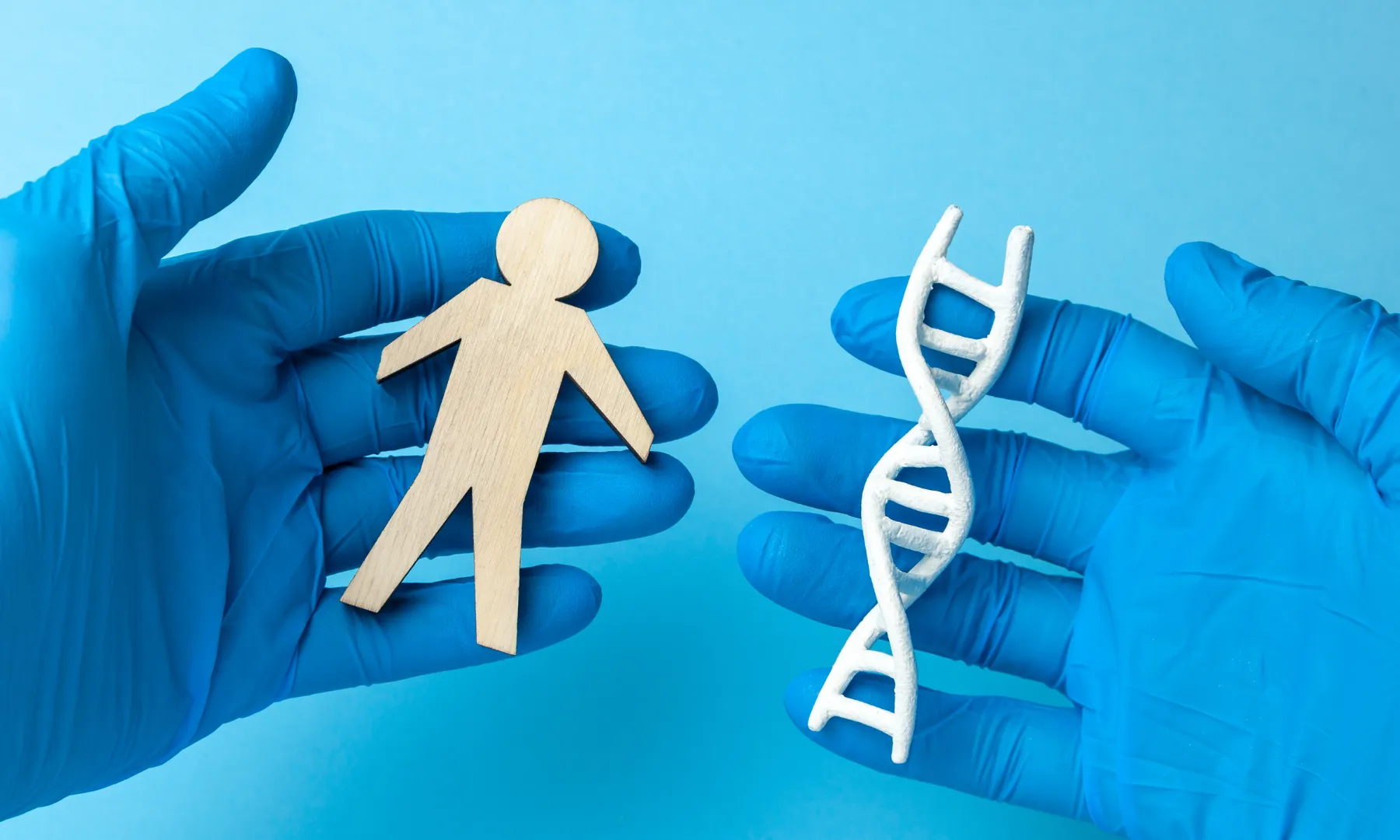
You sip milk and feel fine, then one day it hits back. Has something similar ever happened to you? Did it leave you wondering? Was it the food or your genes? Food intolerances often feel random, yet they rarely are. Over 10 million single-nucleotide polymorphisms shape how you process foods. Many appear in 1 to 50 percent of people. Diet can nudge gene expression through DNA methylation and histone shifts, and these ripples may span generations. Diverse genetic backgrounds make universal diet rules shaky, and that matters when your gut keeps score.
Understanding the link between genetic predisposition to food intolerances could unlock answers to those mysterious dietary struggles and even pave the way for a more personalized approach to eating. Let’s learn how genetic variants can tip you toward lactose or gluten trouble, why epigenetics can turn the dial up or down, and what that means for daily choices.
Key Takeaways
Genetic predisposition plays a significant role in determining how your body reacts to specific foods, influencing intolerances like lactose intolerance and gluten sensitivity.
Nutrigenomics combines genetics and nutrition to explore how DNA variations impact digestion, metabolism, and nutrient absorption.
DNA-based food sensitivity testing offers a precise approach to identifying genetic intolerances, reducing reliance on time-consuming and less accurate methods like elimination diets.
Genetic results are predictive, not definitive, as environmental factors and lifestyle choices can influence whether intolerances manifest.
A personalized, genetics-informed nutrition plan can help optimize dietary strategies, improving health outcomes and reducing unnecessary food restrictions.
Ethical considerations, such as data privacy and avoiding over-promising outcomes, are crucial when implementing DNA-based nutritional practices.
Table of Contents
Understanding Genetic Influence on Food Intolerances
Why is it that some people can enjoy an extra cheesy pizza or a gluten-packed bagel without a second thought, while others regret it almost instantly? The answer might just be in your genes.
The science of nutrigenomics in practice
Nutrigenomics, an incredible combination of nutrition and genetics, dives into how your DNA affects digestion, absorption, and metabolism. Think of it like this: your genes are the blueprint, and food is the fuel. Variations in specific genes can dictate whether your body efficiently breaks down lactose, gluten, or even particular nutrients like folate. Take, for example, single-nucleotide polymorphisms (SNPs)—those tiny changes in your DNA sequence. Over 10 million SNPs exist, and they commonly impact nutrient metabolism, with some appearing in up to 50% of people.
Genetic food intolerances differ from those you acquire over time. Let’s say you’ve always struggled with dairy—this could likely link back to a genetic variant affecting lactase production, the enzyme that breaks down lactose. But if you used to chow down on ice cream without an issue and developed signs later in life, that’s often tied to environmental factors or existing conditions. Understanding this critical distinction is where DNA can guide tailored nutrition, avoiding what doesn’t work for you and leaning into what does.
Why genetic diet intolerance is often misdiagnosed
Genetic intolerances and acquired ones often mimic allergies or autoimmune conditions. Let’s say every time you eat bread, your stomach revolts. Is it a gluten intolerance, coeliac condition, or another autoimmune mix-up? Without proper genetic insight, these distinctions can blur. Oftentimes, elimination diets misfire here too—imagine cutting out dairy only to find it’s not the real culprit because you didn’t have the genetic data to confirm.
False positives from elimination diets can lead to unnecessary diet restrictions. And let’s be real, constantly saying no to your favorite foods without a solid reason is just plain frustrating. With tools like DNA-based food sensitivity testing, you’re equipped to fine-tune your eating instead of playing a constant guessing game. Sure, unraveling your genes might feel like solving a puzzle, but it’s worth skipping those “expensive headaches down the road” (figuratively and literally).
The Role of DNA-Based Food Sensitivity Testing in Clinical Practice
Imagine being able to glance at your DNA and get clues about which foods might not agree with you. DNA-based food sensitivity testing is making this possible, utilizing clinical applications for nutrigenomics. This gives healthcare practitioners a powerful new tool to improve patient care.
How DNA testing identifies predisposition
DNA testing reveals genetic quirks that could explain why some foods make you feel less than fabulous. For instance, the LCT gene holds the key to lactose intolerance—if you’ve inherited specific variants, your body might not produce enough lactase, the enzyme needed to digest dairy. Similarly, genes like HLA-DQ2 and HLA-DQ8 are closely tied to gluten sensitivity, helping identify people at risk for conditions like celiac disease.
Histamine may also play a role in some food reactions. Variants in the DAO gene, which processes dietary histamine, can cause issues like rashes, headaches, or bloating after eating foods like aged cheese or wine. With genetic insights, you’re not just guessing anymore—you’re connecting the dots between genes and food-related discomfort.
Advantages over traditional diagnostic methods
DNA-based food sensitivity testing can spot trouble long before signs appear. Traditional methods often rely on elimination diets or allergy testing, which can be time-consuming and lead to unnecessary food restrictions. But with genetic testing? You’re looking right at the source.
This precision can revolutionize dietary interventions based on nutrigenomics. Instead of blanket recommendations—like “avoid dairy just in case”—you’ll get tailored plans customized to your unique genetic makeup. It’s like moving from a one-size-fits-all sweater to something perfectly tailored just for you.
Limitations and ethical considerations
DNA-based testing isn’t perfect. Just because you have a genetic predisposition doesn’t mean you’ll develop a food intolerance—it’s predictive, not an aim. Think of it like a weather forecast: just because there’s a 70% chance of rain doesn’t mean it’ll pour. So, genetic results are best viewed as a piece of the puzzle, not the whole picture.
Privacy is another consideration. Genetic data is sensitive information. Patients need to know their information is safe and consent carefully before testing. Misusing this sensitive data (or even just poor storage) can lead to severe ethical and legal headaches. Also, practitioners should tread carefully—overpromising what DNA data can deliver, like claiming to “aid” sensitivities, can erode trust and credibility in this rapidly evolving field.

Integrating Nutrigenomics into Clinical Nutrition
Some individuals respond differently to diets due to their genetics. Personalized nutrition for nutrigenomics is based on a patient’s DNA, moving away from generic dietary advice.
Building a Genetic-First Nutrition Plan
Start with the patient’s genetic data. Use DNA-based insights to identify specific intolerances or predispositions, like lactose intolerance or gluten sensitivity. Pair this with their medical history to see the bigger picture. For example, if a patient frequently reports bloating but tests suggest a genetic susceptibility to FODMAP intolerance, their signs suddenly make a lot more sense.
Take a case like histamine intolerance: genomic results might show reduced activity of the DAO enzyme, which breaks down histamine. Combining this data with signs such as migraines or skin issues can help refine dietary interventions and avoid unnecessary eliminations. Together, history and genetics guide you in crafting a sustainable, balanced plan that steers clear of food-related landmines.
Every step is about connecting dots—genomics, signs, and lifestyle—to create a diet that’s functional, not just fashionable. Think of it like being a detective, piecing together clues to build a nutrition plan that finally works for your patient.
Interpreting Reports Accurately
Genetic reports can be challenging. Step one is to avoid over-restricting based on a single marker. Remember, food intolerance often involves polygenic influences, meaning multiple genes play a role. Just because someone carries an allele associated with gluten sensitivity doesn’t mean they need to swear off bread for life.
Cross-check genetic data against other tools, like gut microbiome assessments. A patient’s DNA might indicate predisposition to lactose intolerance, but their current microbiome might show robust lactase-producing bacteria, meaning their tolerance may not be as low as predicted. It’s all about layering your insights to see the whole picture.
Finally, focus on empowering—not overwhelming—your patient. Use simplified explanations (“your gut and genes are like teammates in digestion, and this imbalance needs some coaching”) to make the science easy to digest. The goal is to foster trust and understanding, making patients active participants in their health journey.
Practitioner Tools and Resources
When studying nutrigenomics, tools like DNA-based food sensitivity tests help uncover genetic predispositions to food intolerances, guiding the way like a compass in unfamiliar territory.
Diagnostic Tools
There are so many options when choosing the best DNA-based food sensitivity test kit! The important thing is to prioritize clinical-grade accuracy. This means looking for labs with certifications (like CLIA or CAP) because those are your gold standard for reliable results.
Consider cost versus benefit, too. Yes, tests can feel pricey initially (some ranging from $200-$400), but when you think of the “expensive headaches” saved by trial-and-error guesswork, the investment pays off. When you select a reputable kit, you’ll get detailed, actionable insights, helping you create personalized nutritional plans rather than vague advice. Keep an eye out for brands offering robust support, like educational materials or practitioner-specific platforms.
Data Interpretation Framework
Let’s say you’ve run a test—what do you do with all that data? This is where a strong interpretation framework steps in. Genetic results often include common variants, intolerances, and prevalence rates, but without context, they’re just numbers on a page. Think of your framework as the translator between complex science and practical planning.
For instance, specific genetic variants like HLA-DQ2/HLA-DQ8 (associated with celiac condition) appear in varying prevalence. According to clinical data, celiac-related genes have a lower prevalence of about 1%-2% in the U.S.
Here’s an example of how these might break down:
Genetic Variant | Associated Intolerance | Prevalence Rate | Clinical Note |
|---|---|---|---|
MCM6 | Lactose Intolerance | ~68% globally | This condition is more frequent in African and Asian populations. |
HLA-DQ2/HLA-DQ8 | Celiac Condition | ~1%-2% (U.S.) | Not all carriers develop the condition; environmental triggers play a role. |
ALDH2 | Alcohol Intolerance | ~35% (East Asians) | Causes “Asian flush”—a reaction to alcohol due to enzyme deficiency. |
Using tools like Opus23 Explorer™ helps turn genetic data into practical dietary advice by simplifying complex information. While analyzing, consider individual patient factors. A single SNP (e.g., in MCM6) doesn’t guarantee symptoms, so aim for balance and avoid excessive restrictions.

Implementing in Practice: Workflow for Practitioners
Genetic insights can guide dietary advice. A structured approach helps address patients’ genetic predispositions to food intolerances effectively.
1. Initial Assessment
Start by connecting the dots between signs, family history, and potential triggers. Example: a patient comes in complaining of bloating they can’t seem to shake, and they casually mention a relative with lactose intolerance. That’s your clue. Use simple inquiries—what signs pop up, when do they notice them, and is there a family pattern? Combining this with their lifestyle details gives you a strong foundation before diving into genetic testing. Think of it as laying out the map before choosing the best route.
2. DNA Sample Collection
Accuracy here is everything—without it, you’re staring at blurry data. Encourage patients to follow clear collection protocols, like avoiding food and drink for 30 minutes beforehand. Ensure the sample is appropriately sealed and labeled. A sloppy sample could lead to results that throw you off course, wasting everyone’s time. Setting expectations for precise collection can avoid these expensive headaches down the road.
3. Data Analysis & Interpretation
Once you have the genetic data, the magic begins—but only if you’re working with the right tools. Use validated clinical software, like GenomicInsight™ or Opus23 Explorer™, to decode the data. You’re not just looking for isolated markers like the MTHFR variant, but considering how multiple gene interactions might influence diet. Leverage bioinformatics support to cross-check findings and avoid over-interpreting single SNPs. The goal? Turning raw data into a meaningful, easy-to-grasp story for your patient.
4. Dietary Plan Development
Here’s where science meets humanity: crafting a balanced plan that doesn’t feel restrictive. Sure, eliminating gluten for someone genetically predisposed to the celiac condition makes sense, but don’t stop at “avoid this”; focus on what they can eat. For example, if dairy intolerance is likely, explore lactose-free cheese options or calcium-rich plant foods like almonds and kale. Restricting without replacing can leave patients frustrated and nutritionally deficient. Aim for a happy middle ground—diverse, satisfying meals that cater to both genes and taste buds.
5. Follow-Up & Adjustment
This isn’t a “one and done” deal. Schedule regular follow-ups to track how the plan works in real life. Is their bloating easing up? Are biomarkers like inflammation levels improving? Remember, the body doesn’t always respond to change overnight—it’s a marathon, not a sprint. Adjust the plan as needed, maybe reintroducing foods cautiously or tweaking nutrient levels based on signs. Your role isn’t just to provide answers but to guide patients as they experiment and adapt. Think of this as a partnership, where their feedback shapes the journey.
By embracing this workflow—signs to strategy, samples to follow-through—you can help your patients navigate the world of genetic diet intolerances with clarity and confidence.
Practitioner’s Quick Reference Checklist
✅ Understanding genetic predispositions to food intolerances can transform how you approach nutrition in your practice. By incorporating nutrigenomics testing methods, you can offer patients tailored dietary solutions that address their unique needs and reduce unnecessary restrictions.
✅ Focus on connecting genetic insights with signs, family history, and lifestyle factors to create well-rounded nutrition plans. Use certified testing labs and reliable tools to ensure accuracy, and always communicate findings in a way that’s easy for patients to understand.
✅ Remember, genetic predisposition doesn’t aim intolerance, so avoid over-restricting diets based on single markers. Regular follow-ups and adjustments are key to helping patients feel supported and confident in their journey.
By embracing nutrigenomics, you’re not just personalizing care—you’re empowering patients to take control of their health with clarity and purpose.
If you want to learn more about nutrigenomics practice, consider our Integrative Genomics Specialist Program. Through this guided process, you’ll gain the knowledge to decode the genetic foundations of health, pinpoint the key genes shaping wellness, and harness the latest scientific insights to design personalized, results-driven health strategies for your clients. Get in touch with Elite Gene Labs now!
Frequently Asked Questions
What is the link between genetics and food intolerances?
Certain inherited gene variations can affect how your body digests or metabolizes specific foods, such as dairy, gluten, or histamine-rich items. These variations may increase your risk of developing a food intolerance, making genetics a key factor alongside environment and lifestyle.
How does nutrigenomics help in understanding food intolerances?
Nutrigenomics examines how your DNA influences digestion, absorption, and nutrient use. By studying these genetic patterns, practitioners can identify predispositions to food intolerances and design dietary strategies tailored to your unique genetic profile.
Can DNA testing detect potential food intolerances?
Yes. DNA testing can identify genetic markers linked to conditions like lactose intolerance, celiac disease risk, or histamine sensitivity. This provides a proactive approach, allowing dietary adjustments before symptoms appear.
Are genetic food intolerances different from those developed later in life?
Yes. Genetic intolerances are inherited from your parents and present from birth, while acquired intolerances develop over time due to factors like gut microbiome changes, illness, or dietary patterns.
Does having a genetic predisposition mean I will definitely have a food intolerance?
DNA testing can reduce trial-and-error by highlighting likely intolerances, but it works best alongside other diagnostic methods. Combining genetic insights with clinical evaluation ensures more accurate and sustainable dietary recommendations.
Are DNA-based food sensitivity tests regulated and reliable?
Genetic information is sensitive. Work with labs that follow strict data security protocols, limit data sharing, and provide clear consent policies to ensure your DNA data remains confidential.
What privacy protections should I expect with genetic testing?
Personalized nutrition may help reduce risk for conditions like type 2 diabetes or heart disease by addressing early metabolic issues—such as elevated triglycerides or blood sugar responses—through targeted dietary adjustments.
How should practitioners use genetic testing in nutrition planning?
Practitioners should combine genetic findings with medical history, symptoms, and lifestyle data. Avoid making major dietary restrictions based solely on one genetic marker and ensure patient education about the results.
How can nutrigenomics improve health outcomes for people with food intolerances?
By combining genetic data with personalized nutrition plans, nutrigenomics can help reduce symptoms, prevent nutrient deficiencies, and improve overall well-being through targeted dietary choices
References:
Enattah, N. S., Sahi, T., Savilahti, E., Terwilliger, J. D., Peltonen, L., & Järvelä, I. (2002). Identification of a variant associated with adult-type hypolactasia. Nature Genetics, 30(2), 233–237. https://doi.org/10.1038/ng826
McAllister, B. P., Williams, E., & Clarke, K. (2019). A comprehensive review of celiac disease/gluten-sensitive enteropathies. Clinical Reviews in Allergy & Immunology, 57(2), 226–243. https://doi.org/10.1007/s12016-018-8691-2
García-Martín, E., Martínez, C., Serrador, M., Alonso-Navarro, H., Navacerrada, F., Agúndez, J. A. G., & Jiménez-Jiménez, F. J. (2015). Diamine oxidase rs10156191 and rs2052129 variants are associated with the risk for migraine. Headache, 55(2), 276–286. https://doi.org/10.1111/head.12493
Eng, M. Y., Luczak, S. E., & Wall, T. L. (2007). ALDH2, ADH1B, and ADH1C genotypes in Asians: A literature review. Alcohol Research & Health, 30(1), 22–27. https://doi.org/10.1111/j.1530-0277.2006.00275.x
Storhaug, C. L., Fosse, S. K., & Fadnes, L. T. (2017). Country, regional, and global estimates for lactose malabsorption in adults: A systematic review and meta-analysis. Lancet Gastroenterology & Hepatology, 2(10), 738–746. https://doi.org/10.1016/S2468-1253(17)30154-1
Rubio-Tapia, A., Ludvigsson, J. F., Brantner, T. L., Murray, J. A., & Everhart, J. E. (2012). The prevalence of celiac disease in the United States. American Journal of Gastroenterology, 107(10), 1538–1544. https://doi.org/10.1038/ajg.2012.219
Marcum, J. A. (2020). Nutrigenetics/nutrigenomics, personalized nutrition, and precision healthcare. Current Nutrition Reports, 9(4), 338–345. https://doi.org/10.1007/s13668-020-00327-z
Krogulska, A., Borowiak, M., Dębińska, A., Socha-Banasiak, A., & Kowalski, M. L. (2011). FOXP3, IL-10, and TGF-β genes expression in children with IgE-dependent food allergy. Journal of Clinical Immunology, 31(2), 205–215. https://doi.org/10.1007/s10875-010-9487-1
International SNP Map Working Group. (2001). A map of human genome sequence variation containing 1.42 million single nucleotide polymorphisms. Nature, 409(6822), 928–933. https://doi.org/10.1038/35057149 (Note: This early map identified 1.42 million SNPs; subsequent estimates confirm over 10 million common SNPs in the human genome, with many influencing metabolism.)

